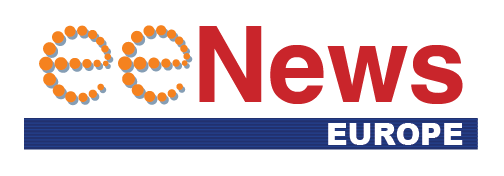
Zero-Trust Security Market Set to Surge by 2032
Zero-Trust protects modern IT environments — whether cloud-based, remote, or on-premises — by continuously verifying user identity and restricting access through segmentation and multi-factor authentication (MFA). The global Zero-Trust Security market is on track to reach USD $124.50 billion by 2032, according to a new report from Verified Market Research. The surge comes as enterprises worldwide strengthen their defenses against escalating cyber threats and adapt to increasingly digital and remote work environments.
For eeNews Europe readers, this trend highlights the critical importance of cybersecurity modernization across the European tech landscape, especially as companies strive to comply with GDPR and manage complex IT infrastructures. The European market is emerging as a key growth region for Zero-Trust adoption, driven by stringent privacy regulations and widespread digital transformation initiatives.
Rising cyber threats drive Zero-Trust adoption
Traditional perimeter-based security models are proving inadequate against the growing sophistication of ransomware, phishing, and insider attacks. Zero-Trust Security, based on the principle of “never trust, always verify,” is gaining traction as organizations demand more adaptive, identity-centric protection.
Enterprises across the banking, financial services, and insurance (BFSI), healthcare, and government sectors are leading the charge, deploying Zero-Trust frameworks to safeguard sensitive data and critical systems. Vendors offering MFA, micro-segmentation, and AI-powered threat analytics are seeing rising demand, as businesses seek scalable solutions capable of continuous verification. And with the expansion of remote work and Bring Your Own Device (BYOD) environments, the need to secure distributed endpoints is a priority across industries.
Regulatory compliance and cloud expansion fuel growth
Europe’s stringent data protection laws (e.g., GDPR) are fueling Zero-Trust adoption. By enforcing strict access controls and continuous monitoring, Zero-Trust frameworks help enterprises maintain compliance while reducing exposure to regulatory penalties.
The ongoing shift toward cloud computing and multi-cloud architectures is another major driver. As companies migrate to SaaS and hybrid infrastructures, Zero-Trust models offer real-time visibility, adaptive access control, and better protection for cloud-based workloads. This unified framework is essential for securing IoT ecosystems and complex digital supply chains now common in European industries.
Challenges and market outlook
Despite its advantages, Zero-Trust implementation remains complex and costly, particularly for SMEs. Integration with legacy systems and the shortage of skilled cybersecurity professionals continue to challenge adoption rates, the report indicates. However, these same barriers are opening new opportunities for managed security service providers and training firms.
North America currently leads the market, but Europe is close behind, the report indicates. The Asia-Pacific region is expected to see rapid acceleration through IT modernization and regulatory reforms.
Key players include Cisco Systems, Palo Alto Networks, Akamai Technologies, Okta, Broadcom’s Symantec, Microsoft, VMware, Fortinet, Check Point, and Cloudflare.
As the report concludes, Zero-Trust Security is quickly becoming a foundational element of enterprise cybersecurity strategy, driven by the global race to protect data, ensure compliance, and enable secure digital transformation.
 If you enjoyed this article, you will like the following ones: don't miss them by subscribing to :
eeNews on Google News
If you enjoyed this article, you will like the following ones: don't miss them by subscribing to :
eeNews on Google News






